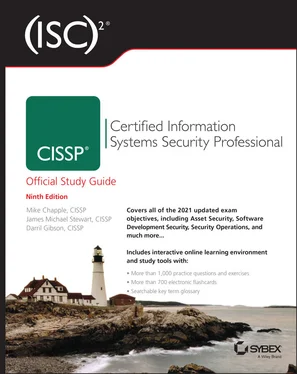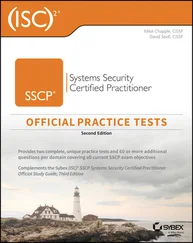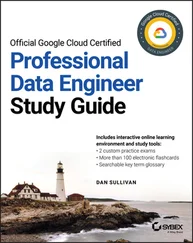Spam is most commonly associated with email, but spam also exists in instant messaging (IM), SMS, USENET (Network News Transfer Protocol [NNTP]), and web content (such as threaded discussions, forums, comments, and blogs). Failing to block spam allows it to waste resources, consume bandwidth, distract workers from productive activities, and potentially expose users and systems to malware.
Shoulder surfing is often a physical world or in-person form of social engineering. Shoulder surfing occurs when someone is able to watch a user's keyboard or view their display. Often, shoulder surfing is stopped by dividing worker groups by sensitivity levels and limiting access to certain areas of the building by using locked doors. Additionally, users should not orient their displays to be visible through windows (from outside) or walkways/doorways (for internal issues). And they should not work on sensitive data while in a public space. Password fields should mask characters as they are typed. Another defense against shoulder surfing is the use of screen filters, which limit the field of view to mostly a perpendicular orientation.
Invoice scams are social engineering attacks that often attempt to steal funds from an organization or individuals through the presentation of a false invoice, often followed by strong inducements to pay. Attackers often try to target members of financial departments or accounting groups. Some invoice scams are actually spear phishing scams in disguise. It is also possible for a social engineer to use an invoice scam approach over a voice connection.
This attack is similar to some forms of the BEC concept. In fact, some invoice scams are combined with BEC so that the invoice sent to an accounting worker is seemingly sent from the CEO. This intertwining of attack elements adds more legitimacy to the invoice, thus potentially convincing the target to pay the invoice.
To protect against invoice scams, workers must be informed of the proper channels through which they should receive invoices and the means by which to confirm that any invoices are actually valid. Separation of duties should exist between workers that place orders for products and services and those who pay invoices. These two groups should also have a third group that audits and governs their activities. All potential acquisitions should be reviewed and approved by a supervisor, and then notice of the acquisition should be sent to the accounts payable department by that supervisor. When invoices arrive, they should be compared against the expected bills based on approved acquisitions. Any invoice that is not expected or otherwise abnormal should trigger a face-to-face discussion with the supervisor or other financial executive.
Discovery of any fraudulent invoices should be reported to the authorities. Digital transmission and postal delivery of invoice scams are considered a crime of fraud and potential theft. The sending of false invoices through the U.S. Postal Service may be considered postal fraud as well.
A hoax is a form of social engineering designed to convince targets to perform an action that will cause problems or reduce their IT security. A hoax can be an email that proclaims some imminent threat is spreading across the internet and that you must perform certain tasks in order to protect yourself. The hoax often claims that taking no action will result in harm. Victims may be instructed to delete files, change configuration settings, or install fraudulent security software, which results in a compromised OS, a non-booting OS, or a reduction in their security defenses. Additionally, hoax emails often encourage the victim to forward the message to all their contacts in order to “spread the word.” Hoax messages are often spoofed without a verifiable origin.
Whenever you encounter a potential hoax or just are concerned that a claimed threat is real, do the research. A couple of great places to check for hoax information or to look up your suspected hoax message are snopes.comand phishtank.com.
Impersonation and Masquerading
Impersonation is the act of taking on the identity of someone else. This can take place in person, over the phone, through email, by logging into someone's account, or through any other means of communication. Impersonation can also be known as masquerading , spoofing, and even identity fraud. In some circumstances, impersonation is defined as a more sophisticated and complex attack, whereas masquerading is amateurish and simpler. This distinction is emphasized in the difference between renting an Elvis costume (i.e., masquerading) for a party versus being a career Elvis impersonator.
Defenses against physical location impersonation can include the use of access badges and security guards, and requiring the presentation and verification of ID at all entrances. If nontypical personnel are to visit a facility, the visit should be prearranged and the security guards provided with reasonable and confirmed notice that a nonemployee will be visiting. The organization from which the visitor hails should provide identification details, including a photo ID. When the person arrives, their identity should be compared against the provided credentials. In most secure environments, visitors are not allowed to roam free. Instead, an escort must accompany the visitor for their entire time within the company's security perimeter.
Tailgating and Piggybacking
Tailgating occurs when an unauthorized entity gains access to a facility under the authorization of a valid worker but without their knowledge. This attack can occur when a worker uses their valid credentials to unlock and open a door, then walks into the building as the door closes, granting the attacker the opportunity to stop the door from closing and to sneak in without the victim realizing. Tailgating is an attack that does not depend on the consent of the victim—just their obliviousness to what occurs behind them as they walk into a building.
Each and every time a user unlocks or opens a door, they should ensure that it is closed and locked before walking away. This action alone eliminates tailgating, but it does require that workers change their behavior. There is also social pressure to hold open a door for someone who is walking up behind you, but this courtesy should not be extended to include secure entry points, even if you think you know the person walking up behind.
Company policy should be focused on changing user behavior toward more security, but realize that working against human nature is very hard. Therefore, other means of enforcing tailgating protections should be implemented. These can include the use of access control vestibules (previously known as mantraps), security cameras, and security guards. Security cameras act as a deterrent more than a prevention, but having a recording of tailgating events can help track down the perpetrators as well as pinpoint the workers who need more security training. A security guard can watch over an entrance to ensure that only valid personnel are let through a security checkpoint.
A problem similar to tailgating is piggybacking. Piggybacking occurs when an unauthorized entity gains access to a facility under the authorization of a valid worker by tricking the victim into providing consent. This could happen when the intruder feigns the need for assistance by holding a large box or lots of paperwork and asks someone to “hold the door.” The goal of the intruder is to distract the victim while the attacker gains access in order to prevent the victim from realizing that the attacker did not provide their own credentials. This ploy depends on the good nature of most people to believe the pretext, especially when they seem to have “dressed the part.”
Читать дальше












